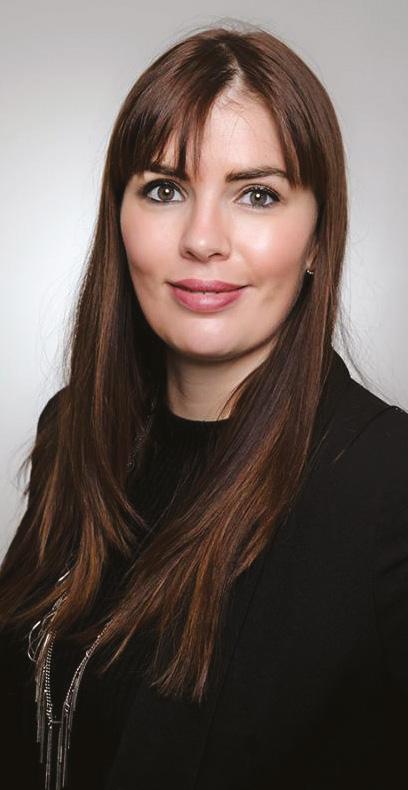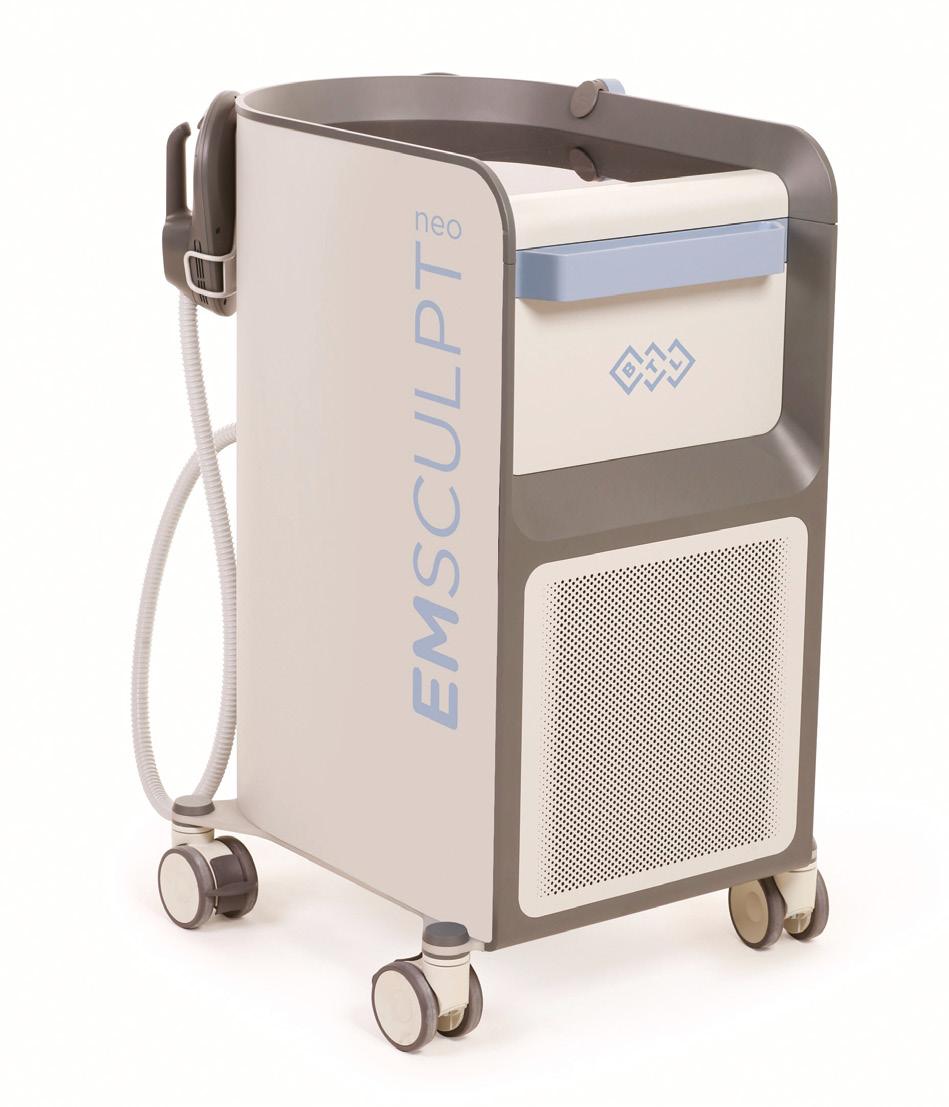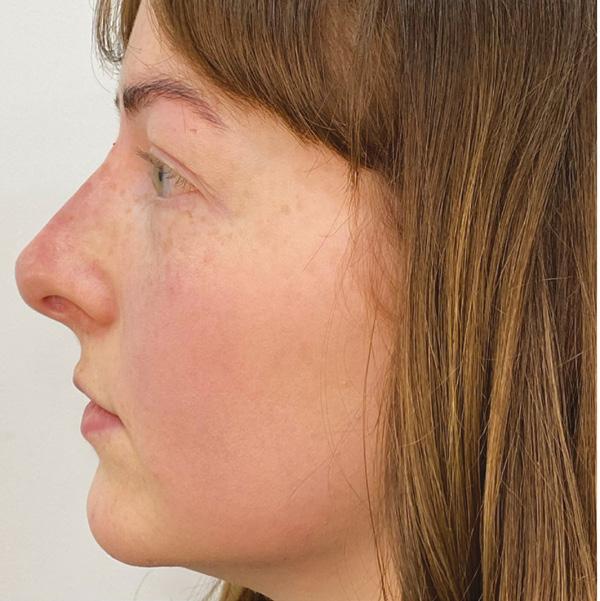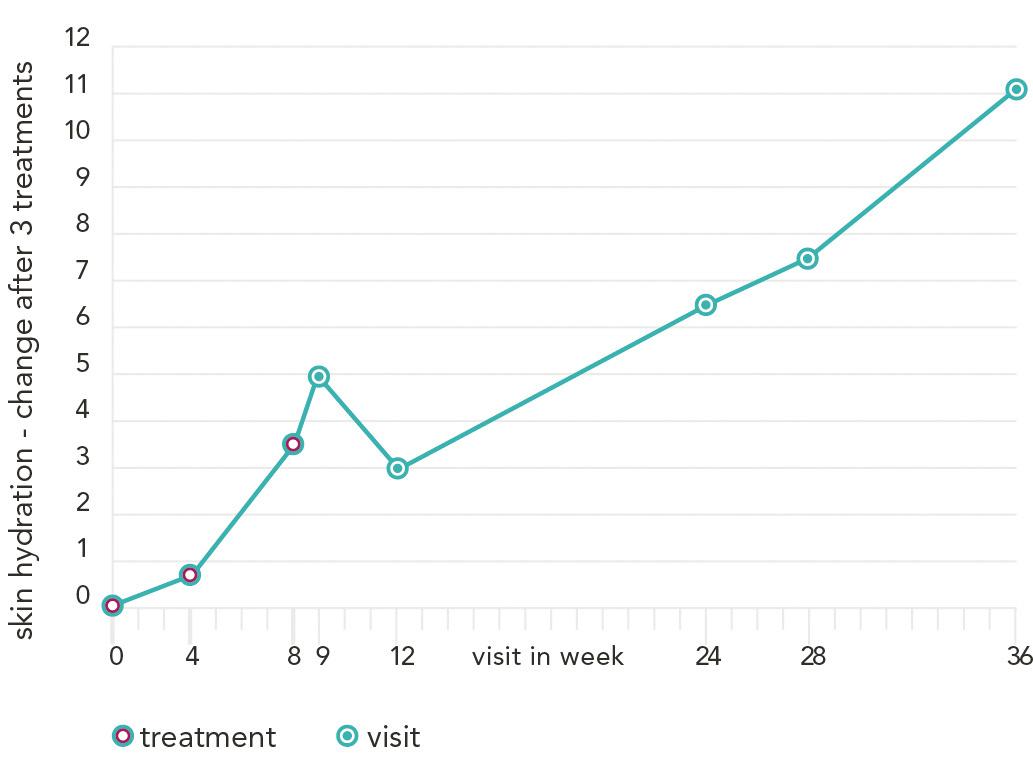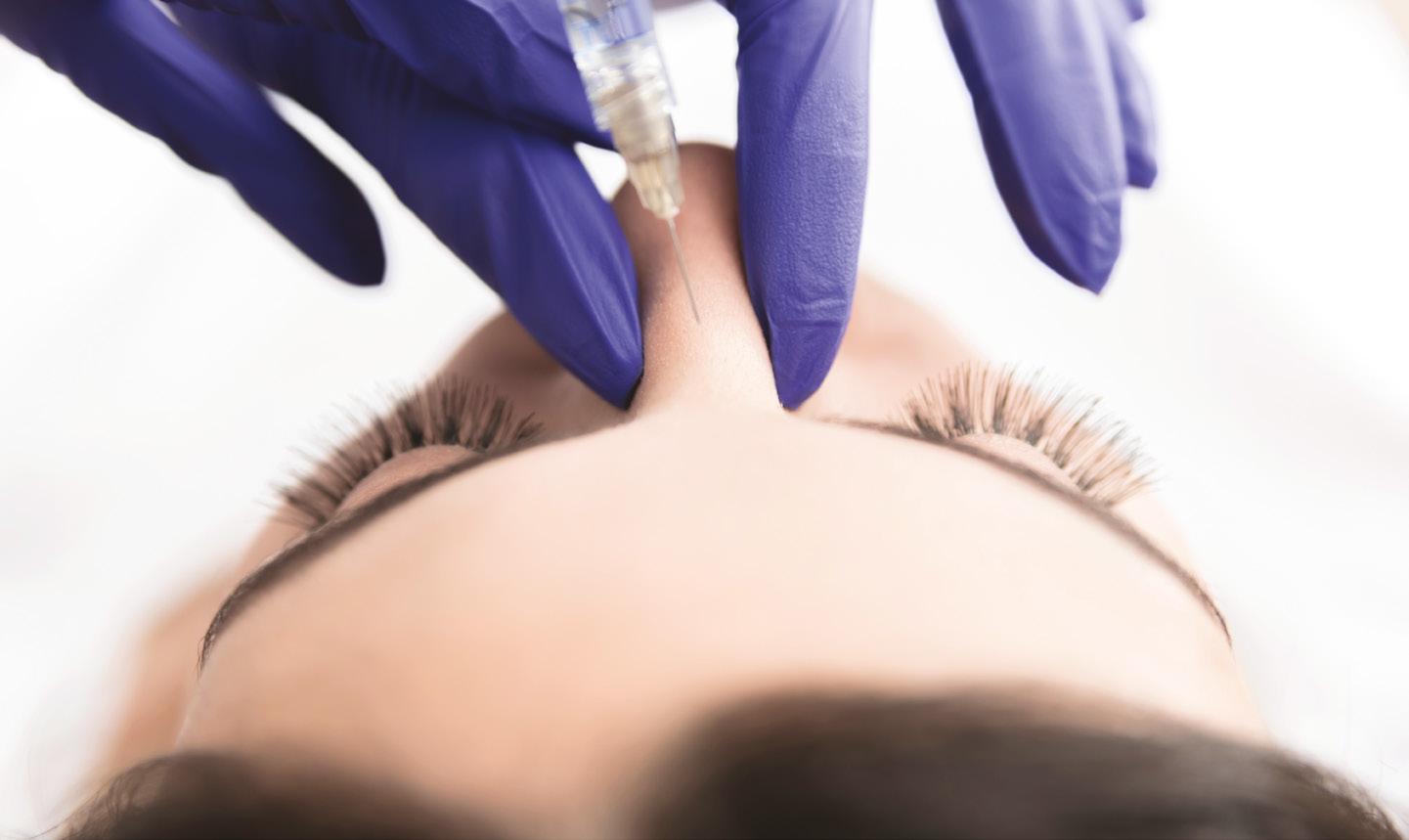@aestheticsgroup
@aestheticsjournaluk
Case Study: Correcting Facial Asymmetry Mrs Sabrina Shah-Desai uses collagen-stimulating filler to treat a patient with the after-effects of partial facial paralysis Facial symmetry is a fundamental goal of many facial aesthetic treatments, and yet some asymmetry is inherent in any face and a natural part of the ageing process.1 Paresis of the facial nerve after a stroke causes functional and aesthetic defects, manifested by facial asymmetry, which is exacerbated by the passing of time as collagen levels deplete and disproportionate deflation occurs. Patients experiencing pronounced asymmetry to the face typically present to aesthetic clinics with a number of concerns, which usually include the brows, eyelids, jawline and cheek areas.
Case study Patient presentation A 59-year-old Caucasian woman presented to me with pronounced asymmetry and a tired, gaunt appearance, sagging jowls, thin skin and subcutaneous tissue. The patient had experienced a brain tumour 13 years previously, which had been debulked, however during surgery she had suffered a stroke which had resulted in left-sided paralysis. Whilst she had recovered movement she ended up with pronounced
asymmetry to the left side of her face and a particular complaint regarding the ptosis of her left eyelid. Consultation The degree of asymmetry was carefully assessed during an initial 40-minute consultation, with careful note taken of past treatments. The patient’s thin skin was prudently noted and presented additional challenges to be considered. The elasticity of the skin was evaluated by pinching the skin, and it was apparent that there was a moderate degree of volume loss and tissue sag, leading to a tired appearance. The tiredness was permeating from the temple area and through to the side of the face, resulting in a sagging jawline which the patient explained was one of her main concerns. The asymmetry of her face, specifically the disparities in the size of each eye, was a particular challenge. It was important to ensure significant consideration of the patient’s underlying medical considerations, which has resulted in a number of limitations to facial movement. The patient exhibited a degree of asymmetry from soft tissue loss as part of the natural ageing process, however the patient’s facial muscle movement exhibited
Aesthetics
aestheticsjournal.com
inconsistencies on each side of the face, resulting in a greater degree of unevenness to the face than would typically be expected. It is always of the upmost importance to consider the functional element to any treated area and, as such, careful planning was required to address both the static and dynamic presentation of the asymmetry. At all consultations, I believe it is imperative to photograph the patient’s face from a multitude of angles. This not only ensures the patient can view their concern from a number of angles, but also enables strong, clear, measured discussion about treatment options and results that can be expected. Photographic imagery also ensures that a patient will have clarity around both what a treatment can and, often more importantly, cannot achieve, so reasonable expectations are set. Time was taken to photograph the patient’s front, three quarter and side profiles, ensuring the background was free of objects. During the consultation, it was apparent that a non-surgical, minimally-invasive treatment was the patient’s preference. A number of treatment options were discussed including thread lifts, plasma technology treatment and also surgery. The patient advised that they had experienced a serious inflammatory response following plasma treatment in recent years, and therefore ruled this option out. She also did not want to undergo surgery at this time, as she works full time in an industry where appearance is important and did not have the luxury of downtime to recover from a treatment. It was therefore recommended that the use of a collagen-stimulating filler would be the most effective course of treatment, addressing both soft tissue laxity and volume
A collagenstimulating filler was the most effective course of treatment, addressing both soft tissue laxity and volume loss
Reproduced from Aesthetics | Volume 8/Issue 8 - July 2021




